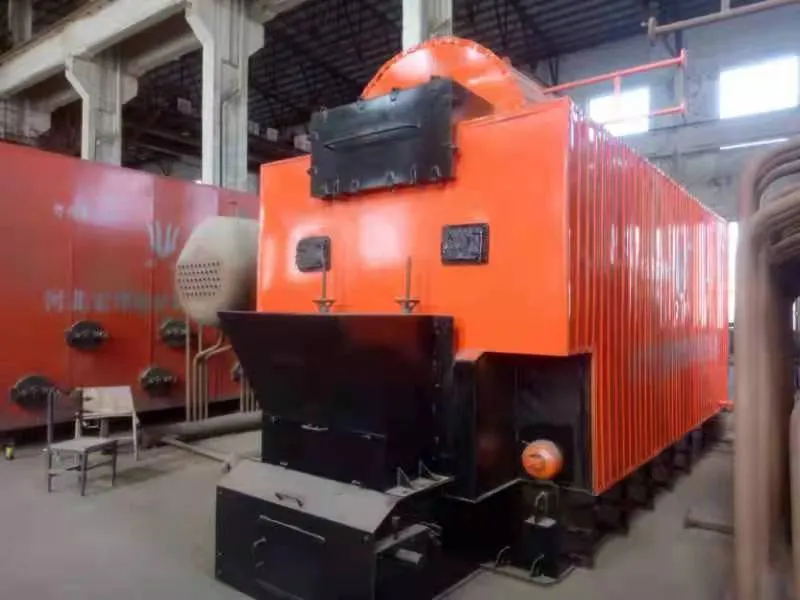
ডিসে. . 06, 2024 05:10 Back to list
Estimating Expenses for Steam Boiler Installation and Operation Costs
Understanding the Cost of Steam Boilers An In-Depth Analysis
Steam boilers are essential components in many industries, providing the necessary heat for processes such as power generation, manufacturing, and heating in various applications. As critical equipment, the cost of steam boilers can significantly impact operational budgets and overall costs in these industries. This article aims to explore the factors that influence steam boiler costs and provide insights for businesses considering investing in this vital technology.
Types of Steam Boilers
The cost of a steam boiler primarily depends on its type. There are several main categories
1. Fire-Tube Boilers These boilers have hot gases passing through tubes surrounded by water. They are generally less expensive and suitable for low to medium pressures.
2. Water-Tube Boilers In these systems, water passes through tubes surrounded by hot gases. They tend to be more efficient and can handle higher pressures but come with a steeper price tag.
3. Electric Boilers As the name suggests, these use electricity to generate steam. They are more efficient and have lower operational costs but can be more expensive upfront.
4. Biomass Boilers These use organic materials for fuel. The costs can vary widely based on fuel availability and technology used.
The type of boiler chosen for a specific application has a direct impact on both the initial investment and ongoing operational costs.
Factors Influencing Boiler Costs
Several factors contribute to the overall cost of steam boilers
steam boiler cost

1. Size and Capacity Larger boilers capable of producing higher steam output typically cost more. Businesses must assess their actual steam needs to choose a size that balances cost and efficiency.
2. Fuel Type The choice of fuel also impacts costs. Natural gas boilers are usually cheaper to operate compared to oil or coal. Biomass boilers require different infrastructure for sourcing fuel, affecting their total cost.
3. Efficiency Ratings High-efficiency boilers have a higher initial cost but offer long-term savings on fuel consumption. For industries aiming to reduce their carbon footprint, investing in a high-efficiency boiler may be worthwhile.
4. Installation and Maintenance The complexity of installation can add to the overall cost. Some boilers may require specialized labor, while others are simpler to install. Moreover, ongoing maintenance needs can vary based on the boiler type, affecting long-term operating costs.
5. Regulatory Compliance Compliance with local environmental regulations can impact costs, as some boilers may require additional equipment to meet emissions standards. This may include scrubbers, economizers, or other technologies that can influence the final price.
Average Costs
While the price of steam boilers can vary widely, it’s helpful to have a general understanding of the potential costs. Small fire-tube boilers can range from $3,000 to $40,000, while larger water-tube systems can exceed $100,000. High-capacity industrial boilers can even reach costs of several million dollars, depending on specifications and additional features. When considering the total expenditure, businesses should also factor in installation costs and the anticipated lifespan of the boiler.
Investment Considerations
When businesses evaluate the cost of steam boilers, they should also consider the total cost of ownership (TCO). TCO encompasses not only initial purchase price but also installation, maintenance, fuel costs, and potential downtimes. Projects that assess these variables can lead to more informed decisions, ultimately enhancing productivity and reducing costs in the long run.
Conclusion
In summary, understanding the cost of steam boilers involves more than just the sticker price. Businesses must consider a variety of factors, including type, size, fuel, and efficiency, as well as installation and maintenance expenses. By approaching the investment in steam boilers with a comprehensive understanding of these elements, companies can make informed choices that align with their operational needs and budgetary constraints. Proper evaluation and planning will not only ensure adequate steam supply but also optimize overall efficiency and sustainability.
-
Efficient Biomass Fired Hot Water Boiler | AI Heating Solution
NewsAug.01,2025
-
High-Efficiency Gas Thermal Oil Boilers | HPT Models
NewsJul.31,2025
-
Oil Fired Hot Water Boilers Sale - High Efficiency & Affordable
NewsJul.31,2025
-
High-Efficiency Commercial Oil Fired Steam Boiler for Industry
NewsJul.30,2025
-
High-Efficiency Biomass Fired Thermal Oil Boiler Solutions
NewsJul.30,2025
-
High Efficiency Gas Fired Thermal Oil Boiler for Industrial Heating
NewsJul.29,2025
Related PRODUCTS






















